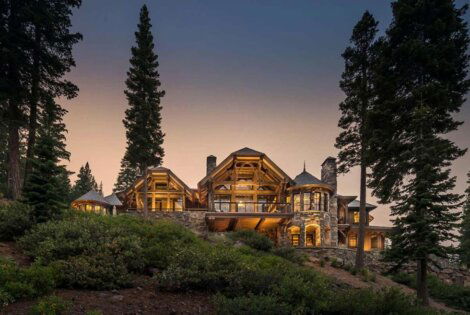In China’s Guangxi province sits a beautiful ancient town called Fuzhou City. In it you’ll find one of the most marvelous architectural centerpieces of the country. It’s called the Liuzhou Suiseki Hall.
Zhanghua Architects, the firm responsible for this highly unusual building, drew inspiration from the two mountains visible in the Fuzhou landscape, the other one being much shorter and rounder. They deliberately made nature and man-made marvel coexist in harmonic bliss. As such, the angular rear face and curving front face make up most of the volume. In effect, you get a picturesque combination of nature and landmark. Tthough both are strong visual points when seen together, neither cancel each other out. A fine balance, so to speak.
At first glance, you’ll realize that the building looks like a chunk of rice terrace being swallowed by the ground. That’s too simplistic a description for this awfully wonderful architectural achievement, though. Zhanghua shows how different parts of nature, however antagonistic, can mesh beautifully. Here’s the firm explaining further:
“From the cultural point view of, in Chinese landscape culture, a mountain and a stream are not opposite but a harmony worldview. Mountain and flowing water like ‘yin’ and ‘yang’ are the performance of all things. Two sides is a unity of opposites and can transform into each other between the two. The heavy part is earth, while the light part is heaven.”
Using that principle, Zhanghua was able to interweave peculiarities of linearity with the more free-form elements of curves and waves, amounting to a building that’s supposed to look off-putting and bizarre, but isn’t.
LEARN MORE HERE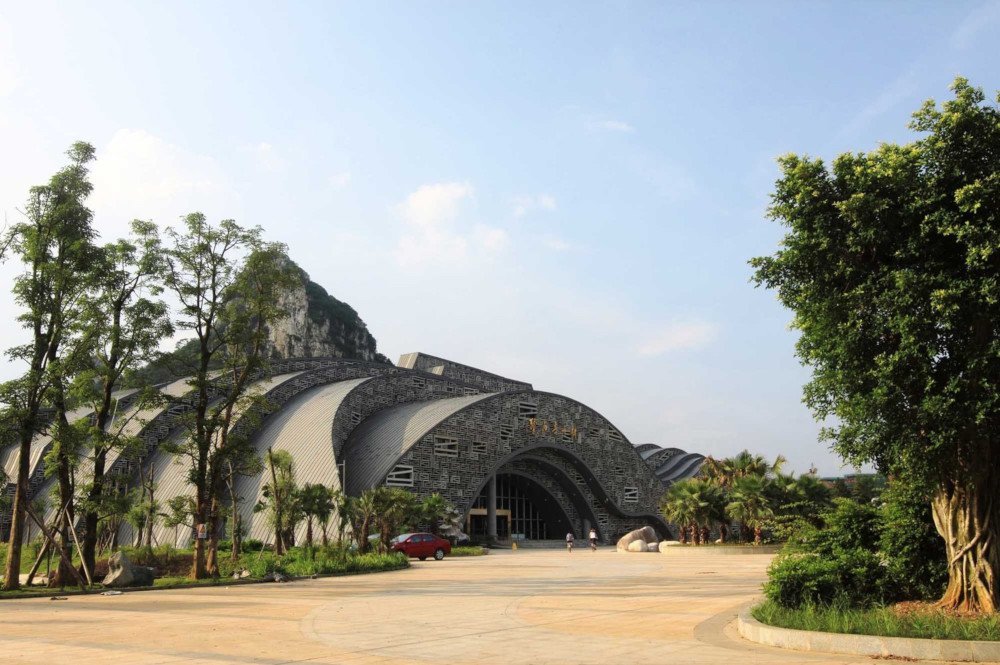
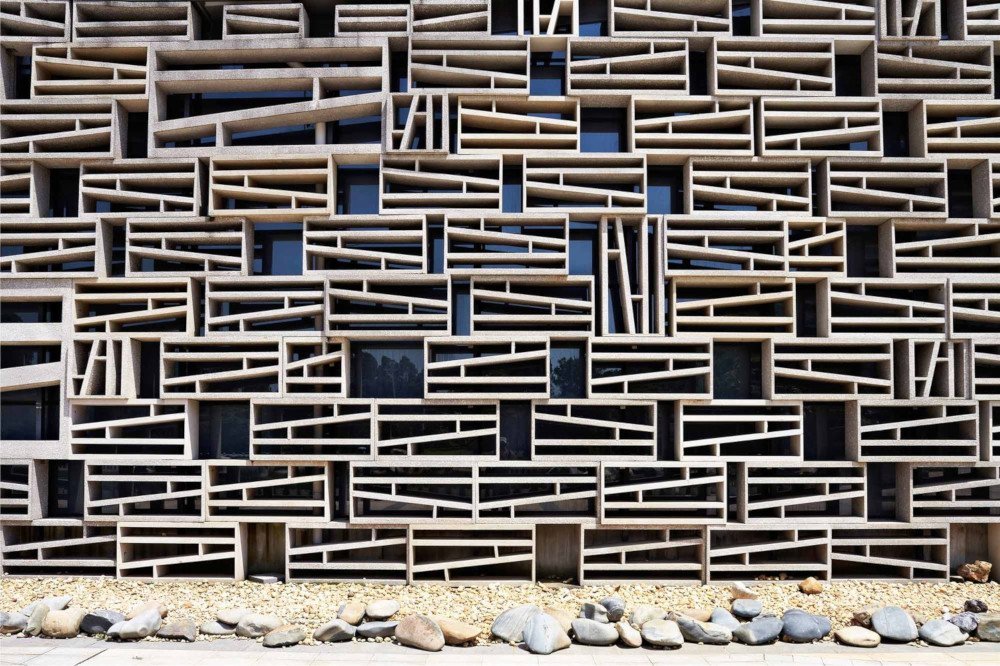
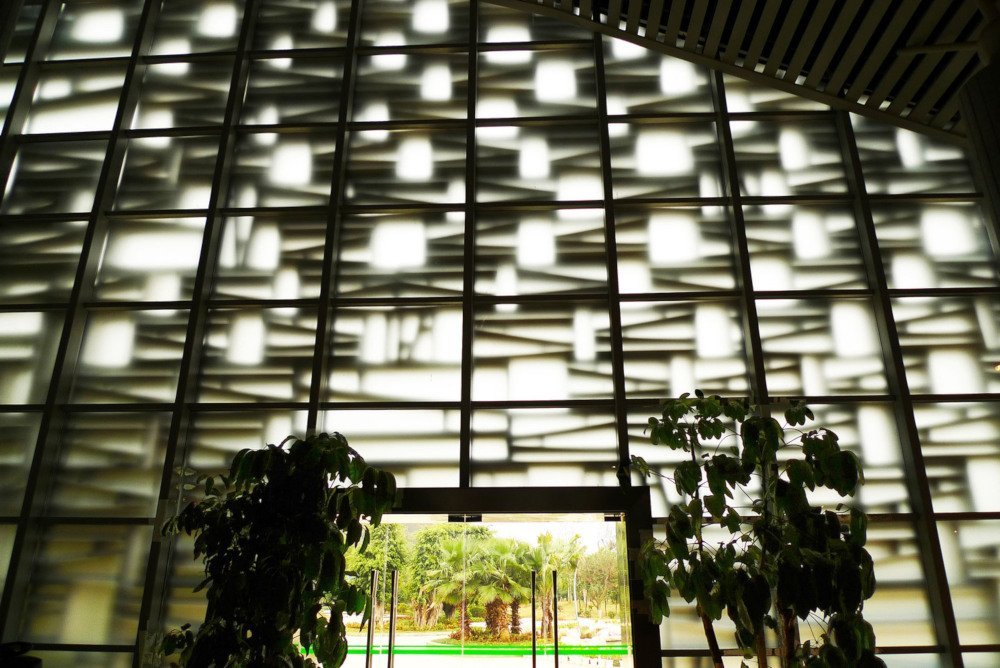
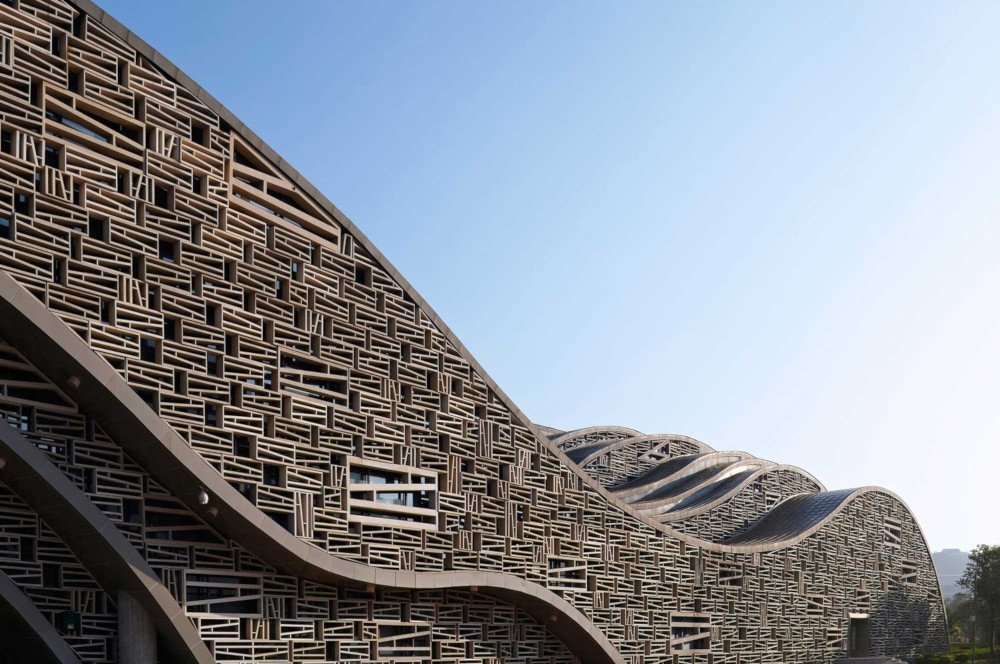
Photos courtesy of Zhanghua Architects





